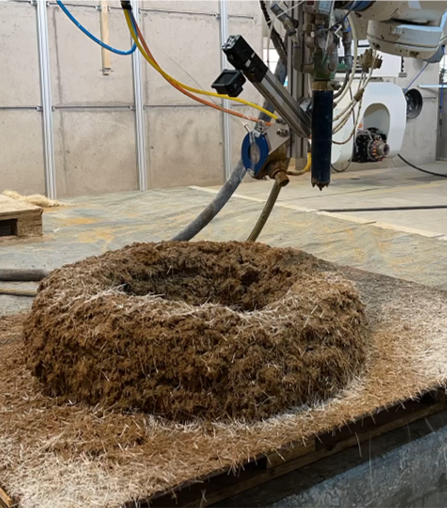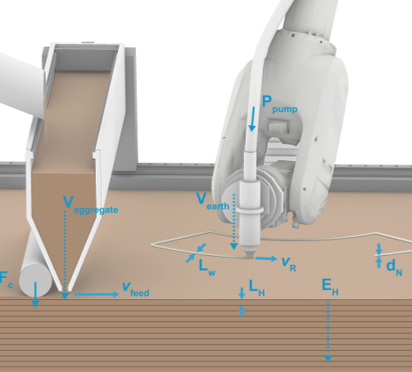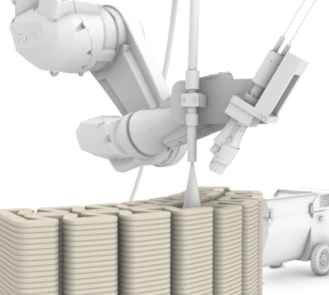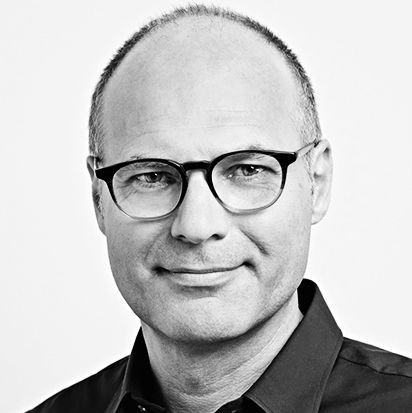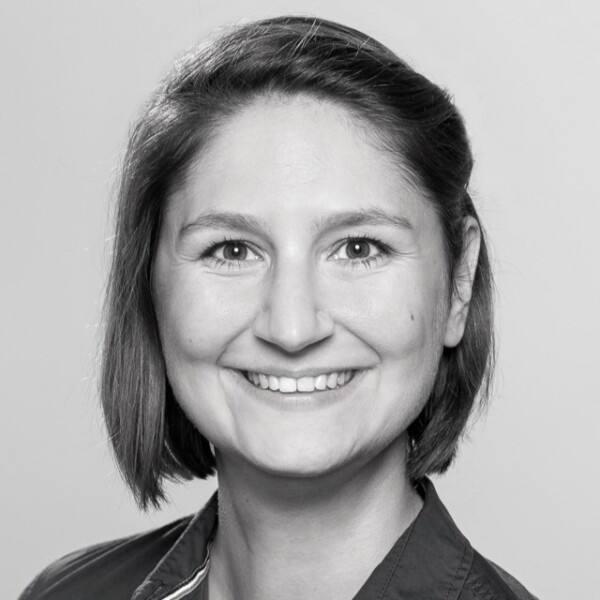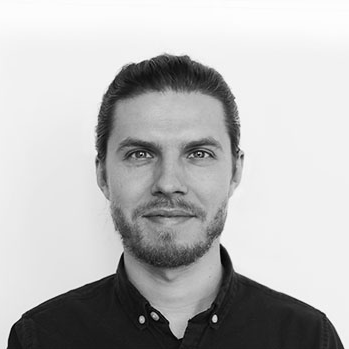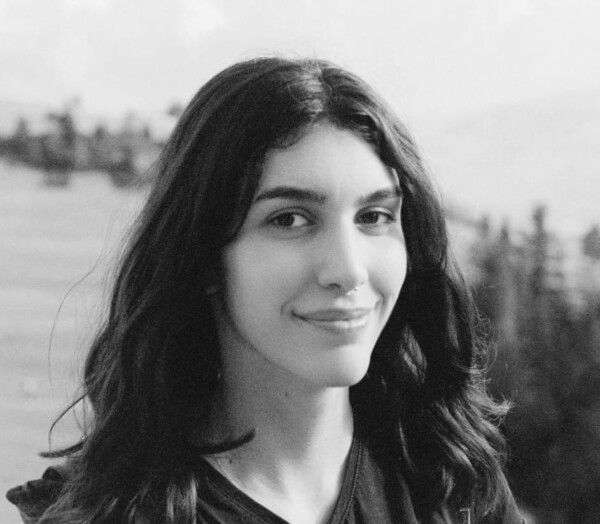Project A 10
Earth Additive Manufacturing (EAM) – Material and Process Combinations for AM with Earth-based Materials
In recent years, research and development of Additive Manufacturing (AM) in the domain of architecture, engineering, and construction has greatly increased, with a large variety of process technologies, but with a strong focus on cementitious materials. While such additive processes allow for zero-waste production and the overall minimization of material consumption, the primary use of cement-based products still brings with it concerns of remaining environmental impacts in terms of high CO2 emissions, high embodied energy, and depletion of natural resources. These concerns are motivating the exploration of earthen materials as an alternative to cement-based construction methods and the re-approach to earthen materials and historic earth building methods in novel Earth Additive Manufacturing (EAM) processes. Earth-based materials are traditionally made from variable mixtures of clays, which act as a binder in the mixture, aggregates, and water, with optional additions of natural fibres, e.g., straw or hemp.
Aim
The main objective of this research is the conception and investigation of EAM processes, based on the characterization of earth-based material mixtures for two novel processes, namely a) Sprayed Earth Additive Manufacturing (SEAM) as a deposition-based EAM process, and b) Intrusion Earth Additive Manufacturing (IEAM) as a particle-bed-based EAM process, and their evaluation in large-scale architectural applications. Expected outcomes of the research, based on the WPs, are: Firstly, the investigation of the applicability of various earth-based materials for AM processes as well as the general characterization of earth-based binders and material mixtures for EAM in terms of their pumpability, buildability, shrinkage behaviour, and compressive strength. Secondly, the design and implementation of two exemplary EAM processes and exploration of different earth-based binders and material combinations therein. Lastly, the exploration of these EAM technologies for geometrically differentiated architectural components that can combine insulation and load transfer, and the validation of the proposed technologies through exemplary fabrication experiments and demonstrators at full construction scale.
Networking with other projects
To fundamentally investigate the potentials of EAM, this research project is strongly linked to other research areas within the TRR 277: Firstly, to projects developing concrete AM technology in Focus Area A, in particular A04, to transfer knowledge gained in SC3DP to earth spraying, and A02, respectively, to transfer knowledge gained in SPI to earth intrusion, as well as A03, to evaluate near-nozzle mixing systems for both processes. In return, the cement reduction potential using calcined clays will feed back to these projects and benefit them accordingly. Another opportunity within Focus Area A is an association between A10 and A05, in which the applicability of fibre reinforcement in EAM can be explored. Secondly, this project aims to create links to projects in Focus Area B, in particular with B05, in which process-related design limitations of spraying earthen materials could be overcome by the implementation of mobile robots. Thirdly, the general applicability of EAM for the building scale is examined in collaboration with projects of Focus Area C. Here, a special focus is given to the evaluation of the building physics potential (with C03), the possibility of component prefabrication and jointing techniques (with C05), as well as the evaluation of the ecological sustainability potential (with C09). These links aim to work as an interaction and mutual feedback for the fundamental advancement of each of the individual research projects. In addition, project A10 cooperates with Project Ö through technical consulting and sharing of research results toward the development of learning activities. Results of the learning activities are reflected back to A10 by Project Ö.

